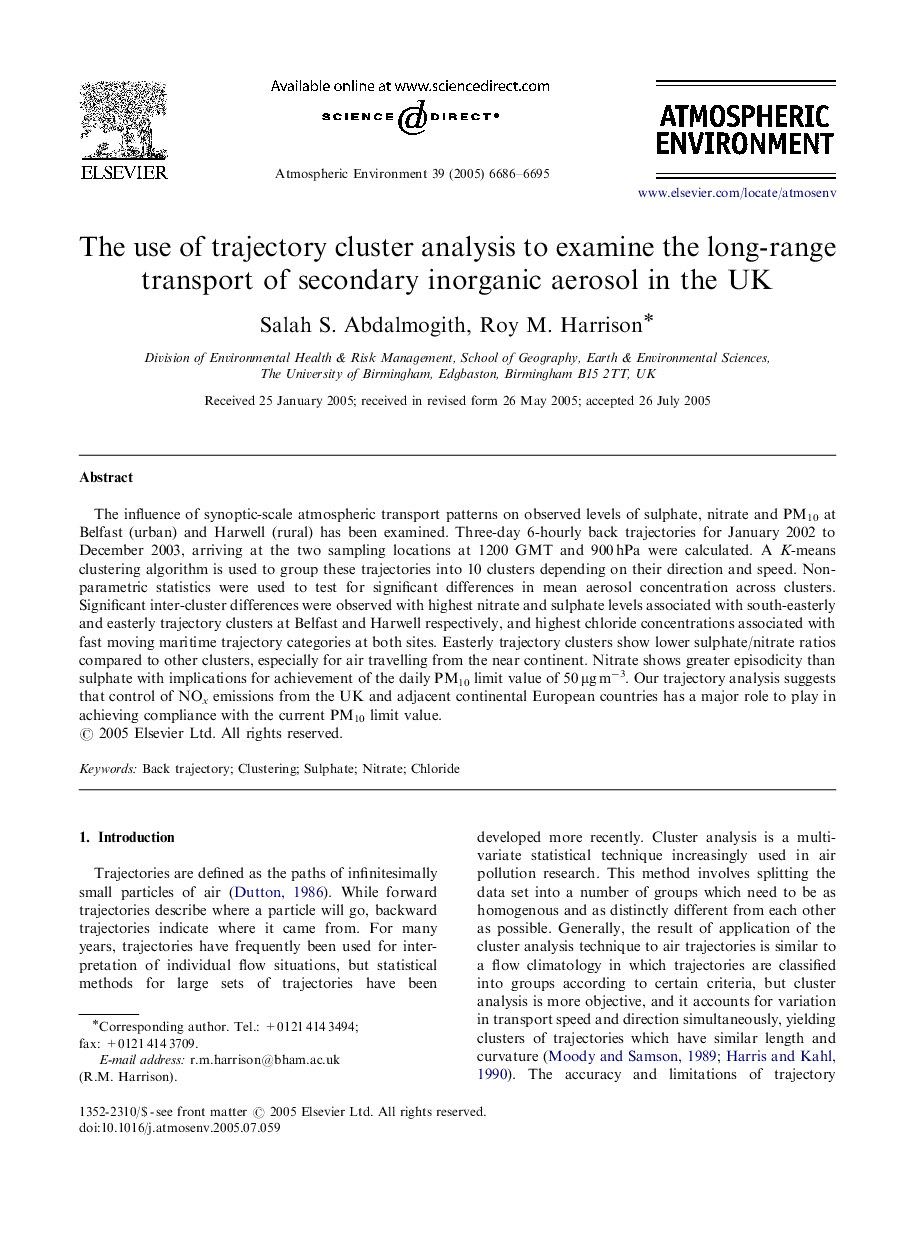| Article ID | Journal | Published Year | Pages | File Type |
|---|---|---|---|---|
| 4445347 | Atmospheric Environment | 2005 | 10 Pages |
The influence of synoptic-scale atmospheric transport patterns on observed levels of sulphate, nitrate and PM10 at Belfast (urban) and Harwell (rural) has been examined. Three-day 6-hourly back trajectories for January 2002 to December 2003, arriving at the two sampling locations at 1200 GMT and 900 hPa were calculated. A K-means clustering algorithm is used to group these trajectories into 10 clusters depending on their direction and speed. Non-parametric statistics were used to test for significant differences in mean aerosol concentration across clusters. Significant inter-cluster differences were observed with highest nitrate and sulphate levels associated with south-easterly and easterly trajectory clusters at Belfast and Harwell respectively, and highest chloride concentrations associated with fast moving maritime trajectory categories at both sites. Easterly trajectory clusters show lower sulphate/nitrate ratios compared to other clusters, especially for air travelling from the near continent. Nitrate shows greater episodicity than sulphate with implications for achievement of the daily PM10 limit value of 50 μg m−3. Our trajectory analysis suggests that control of NOx emissions from the UK and adjacent continental European countries has a major role to play in achieving compliance with the current PM10 limit value.
